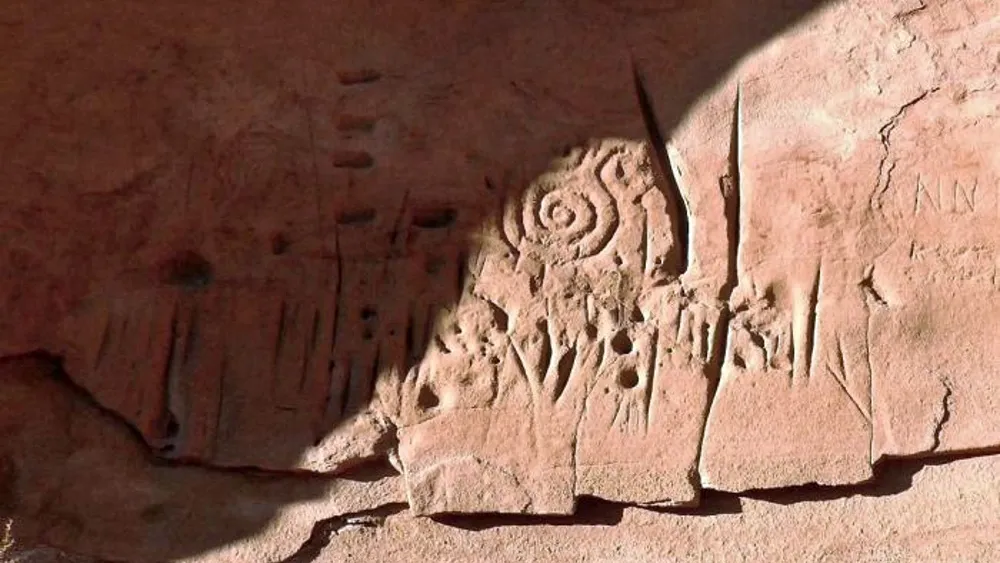What are Native American rock art symbols meanings? In the quietude of rocky landscapes, beneath the vast expanse of the American sky, lies a gallery of ancient enigmas—Native American rock art symbols. These captivating etchings and paintings on stone have intrigued and mystified generations, leaving to wonder about the profound meanings they hold.
Join 49native on a journey to unveil the hidden narratives behind these symbols, shedding light on the cultural, spiritual, and historical significance they carry.
What are Native American rock art symbols meanings?
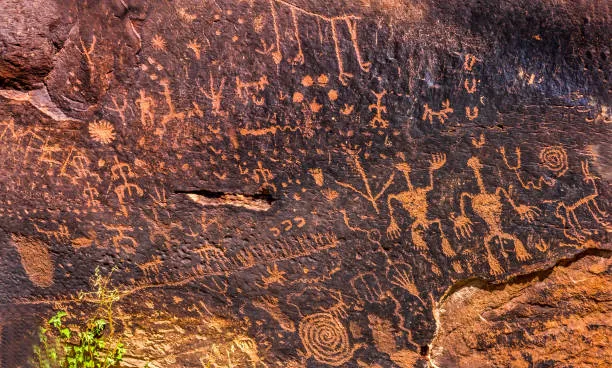
In the heart of the American Southwest, etched into the rugged canvas of stone, lies a testament to the rich tapestry of Native American history and culture. These mesmerizing creations, known as Native American Indian rock art, are more than just intricate patterns and symbols etched onto rock surfaces; they are windows into the past, repositories of tribal wisdom, and captivating glimpses into the spiritual realms of indigenous peoples.
Pictographs and Petroglyphs: Unveiling Two Artistic Styles
Native American Indian rock art embodies two distinctive styles of creation: pictographs and petroglyphs. Pictographs, as the name suggests, are vibrant drawings and paintings adorning the surfaces of rocks, while petroglyphs take the form of meticulously carved images. Together, they form a diverse tapestry of artistic expression, each with its unique allure and significance.
Guardians of Tribal History
These remarkable artworks were not mere flights of fancy; they were a conscious effort by Native Americans to document their history, tell stories of tribal events, and impart sacred knowledge. Among these intricate designs, one can discern ceremonial images, tribal symbols, and even rudimentary maps of hunting territories.
Every stroke of pigment and every chisel mark on the rock carried the weight of tradition and the essence of a people’s connection to the land.
The Southwest’s Treasures
The southwestern United States stands as a veritable treasure trove of Native American Indian rock art. Within this arid expanse, where the land meets the sky in a timeless dance, lie thousands of rock art sites, each with its narrative to share. The state of Utah, in particular, boasts over a thousand known rock art sites, while neighboring New Mexico and Texas also hold their share of these cultural treasures.
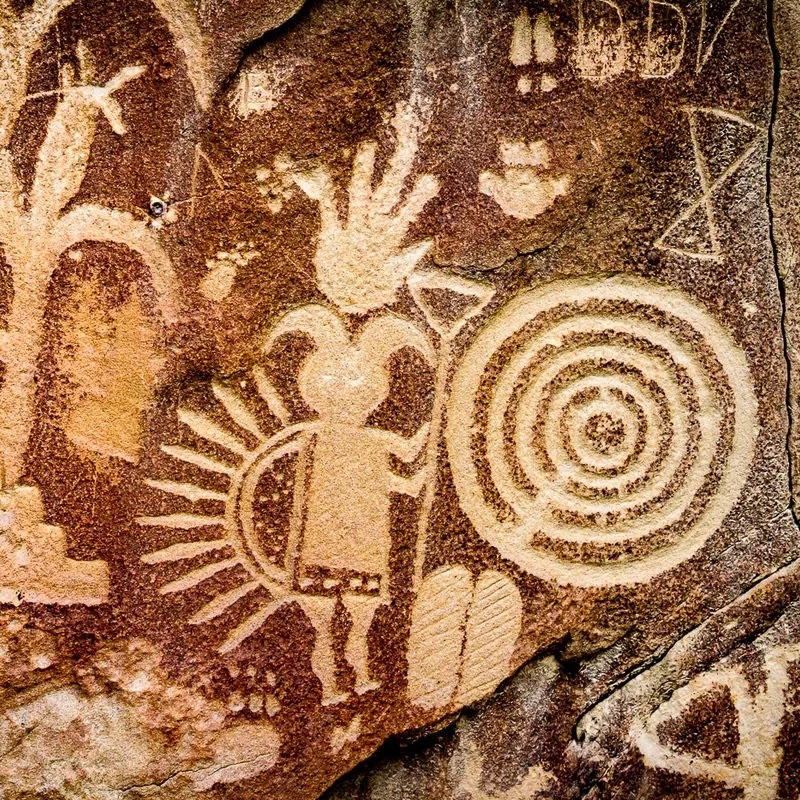
Reading the Canvas: Deciphering the Symbols
To truly appreciate the depth of Native American Indian rock art, one must learn the art of reading the canvas. Take, for instance, the evocative image found at Newspaper Rock in southwestern Utah.
Amidst the intricate designs, one can discern a figure on horseback, hunting a deer with bow and arrow, while buffalo graze in the background. The presence of a wheel hints at a time when Anglo settlers had made their mark on these lands. But what other stories lie hidden within these layers of pigment and stone?
In another striking example, a solitary animal stands proudly in the lower left of the canvas, its form meticulously etched. Yet, to the right, a seemingly colossal figure emerges. Is it a massive creature or a natural formation? If indeed intentional, what compelled the artist to render such a stark contrast in size between these two enigmatic beings?
Exploring the Mysteries
Native American Indian rock art is a universe waiting to be explored, a testament to the enduring spirit of indigenous peoples. It’s a glimpse into the soul of a culture, an invitation to decipher the secrets of the past, and a celebration of the artistic prowess that transcends time and place.
To embark on your journey through the world of Native American Indian rock art and to view more captivating images, invite you to explore specialized websites dedicated to preserving and sharing these extraordinary cultural treasures.
What are the Native American symbols on rocks?

For millennia, the indigenous peoples of North America have used art to convey messages, preserve history, and celebrate their vibrant cultures. Among the most captivating forms of Native American art are petroglyphs and pictographs—images etched in stone and painted on surfaces, each holding within it a tale of ancient wisdom and communication.
Petroglyphs and Pictographs: Messages Carved in Stone and Paint
Petroglyphs and pictographs are the very essence of visual storytelling. They serve as a rich repository of Native American heritage, each stroke of the chisel or brush capturing a word, phrase, or symbol. These distinct forms of expression, while divergent in technique, share a common purpose—to communicate, inform, and record.
- Petroglyphs: The etching of images and symbols into solid rock is the hallmark of petroglyphs. Using rudimentary tools like stones and bones, Native Americans carved their narratives onto rock surfaces, creating enduring symbols of their culture.
- Pictographs: In contrast, pictographs found life in vibrant hues, as indigenous artists painted their messages onto stone canvases. Natural pigments like ochres and iron oxides gave birth to a spectrum of colors, including rich reds, warm yellows, earthy browns, and deep blacks. These pigments not only adorned the rock but also seeped into its very pores, ensuring the permanence of these artistic expressions.
A Universal Language of Communication
For nomadic tribes and diverse linguistic landscapes, petroglyphs and pictographs were a universal language—a means to bridge communication gaps and convey vital information. These intricate designs held unique patterns and meanings for each tribe, becoming a powerful medium for intertribal discourse.
These messages adorned cave walls and sheltered alcoves, strategically placed to withstand the ravages of time and the elements. Native American symbol designs were not confined to rocks alone; they adorned homes and graced buffalo hides, memorializing significant events within the tribe.
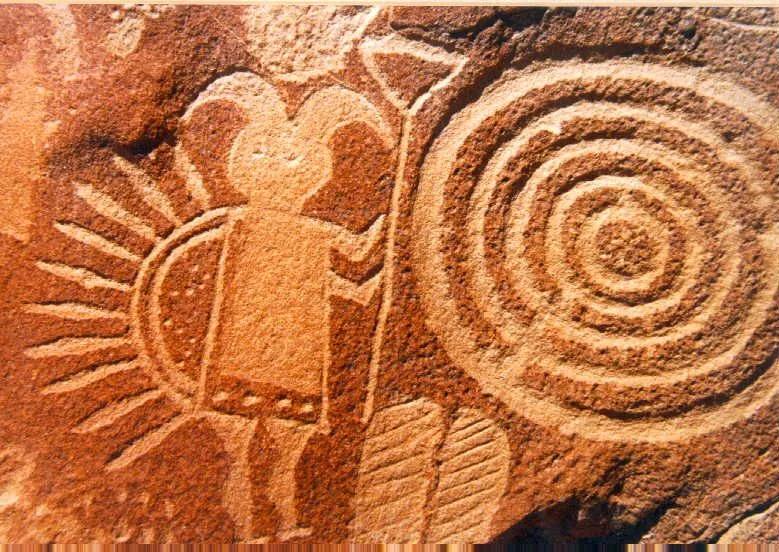
Preserving the Testaments of Time
The legacy of petroglyphs and pictographs endures to this day, with some of these ancient images dating back thousands of years. While they can be found throughout North America, the American Southwest stands as a focal point for these mesmerizing creations.
One remarkable site that stands as a testament to this ancient artistry is the Petroglyph National Monument in New Mexico. Stretching over 17 miles of escarpment, this monument boasts an estimated 25,000 petroglyph images. Archaeologists speculate that some of these petroglyphs predate the Puebloan era, reaching as far back as 2000 BC.
Intriguingly, other petroglyphs within the monument’s bounds carry the imprints of early Spanish settlers who arrived in the 1700s. However, the majority—around 90%—are attributed to the ancestors of today’s Pueblo people, who have called the Rio Grande Valley home since before 500 AD.
The surge in population around 1300 AD gave rise to numerous new settlements, marking a period during which many of these petroglyphs were meticulously carved.
As gaze upon these ancient symbols etched into rock and painted with care, bear witness to the unbroken thread of Native American heritage. The language of petroglyphs and pictographs transcends time, reminding of the enduring power of visual storytelling.
What are Native American petroglyphs symbols?
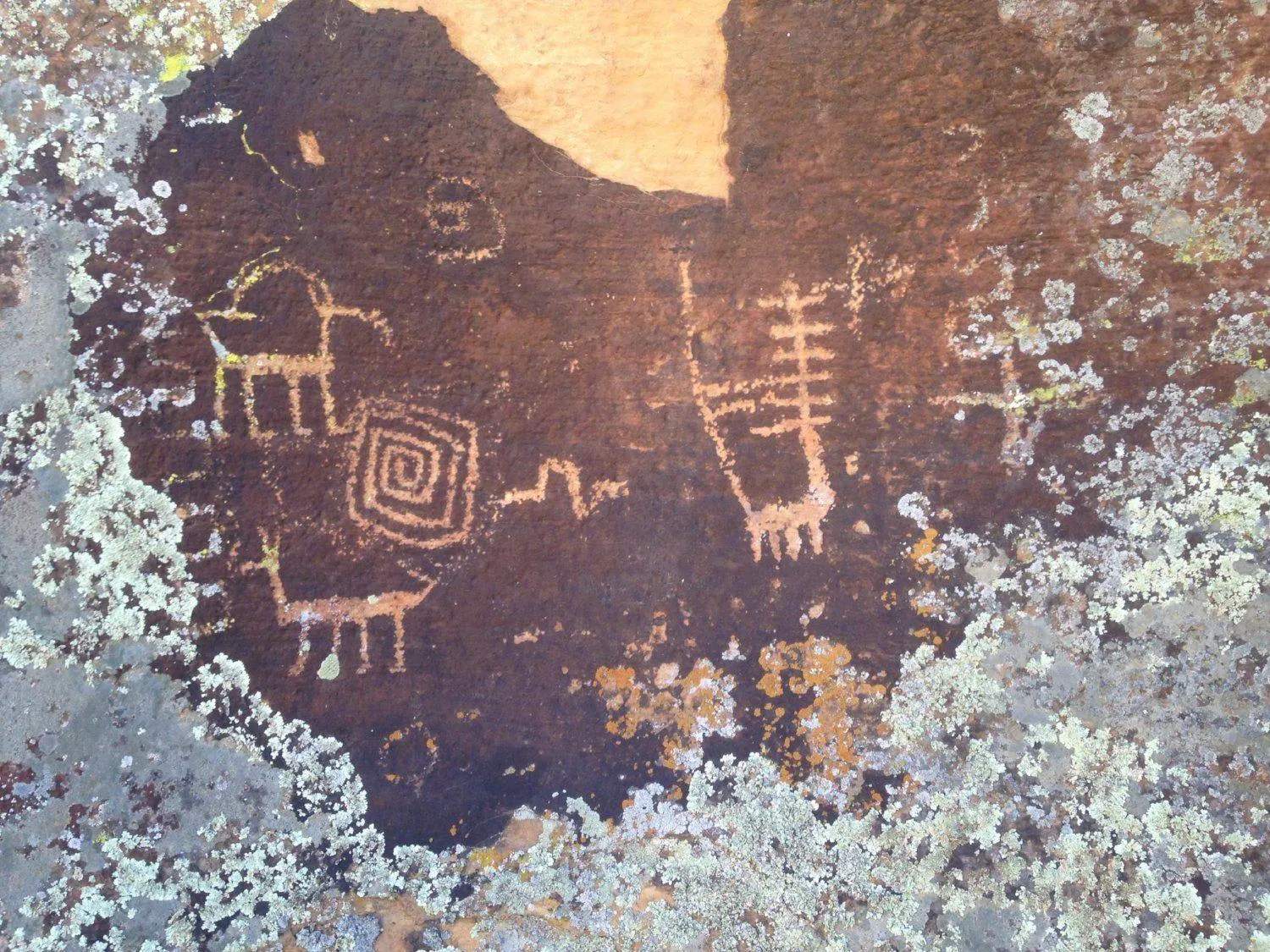
In the heart of ancient landscapes, amidst the rugged terrain of the American Southwest, lies a treasure trove of enigmatic artistry etched in stone. These are the petroglyphs, captivating symbols that transcend time, serving as windows into the complex world of Native American societies. As embark on this journey of discovery, we’ll delve into the profound significance of petroglyphs and their enduring relevance.
Petroglyphs: More Than Meets the Eye
In a world where modern society often seeks concise explanations, petroglyphs defy easy categorization. These intricate carvings are far more than mere “rock art” or attempts to mimic the natural world.
They stand apart from hieroglyphics, which are symbols employed to represent words, and they certainly aren’t the remnants of ancient Indian graffiti. Instead, petroglyphs are powerful cultural symbols deeply intertwined with the intricate fabric of Native American societies and religions.
Guardians of Tradition
Petroglyphs occupy a hallowed place within the sacred landscapes they call home. These sites are more than silent canvases; they are living witnesses to traditional ceremonies that continue to this day.
To truly comprehend the meaning embedded within each petroglyph, it’s essential to consider the context in which it resides. Pay close attention to the orientation of each image with respect to the horizon and neighboring symbols. The surrounding landscape plays a crucial role in unraveling the mysteries they hold.
Decoding the Messages
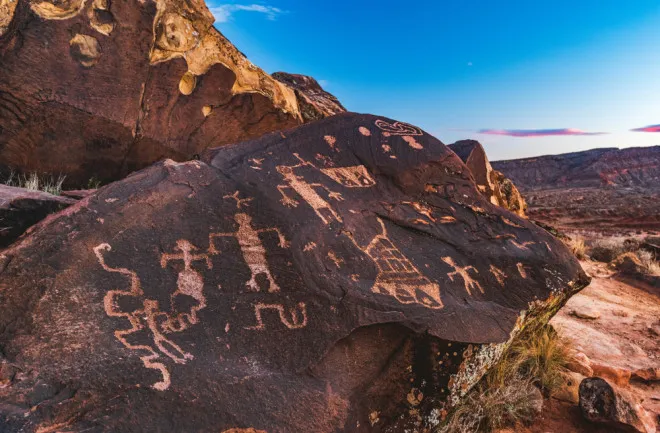
For contemporary society, deciphering the full breadth of petroglyph meaning can be a daunting task. Some petroglyphs guard their secrets closely, known only to those who carved them. Others serve as markers, representing tribes, clans, kivas, or societies. Some invoke the presence of spiritual entities, while others provide clues about the comings and goings of those who once inhabited these lands.
A Continuation of Heritage
The significance of petroglyphs persists in the present day, bridging the gap between the past and the contemporary. They remain a testament to the enduring legacy of those who came before, offering a poignant reminder of their existence. These enigmatic symbols invite to contemplate their importance in both past and present cultures, serving as a bridge across generations.
As stand before these petroglyphs, let not merely observe but immerse ourselves in the profound narratives they encapsulate. In doing so, honor the rich tapestry of Native American heritage and the timeless artistry that continues to inspire awe and curiosity.
Sample of Native American stone carving motifs
To learn more about cultures other than American stone, please see this article: Meaning Of Native American Rock Art Symbols

